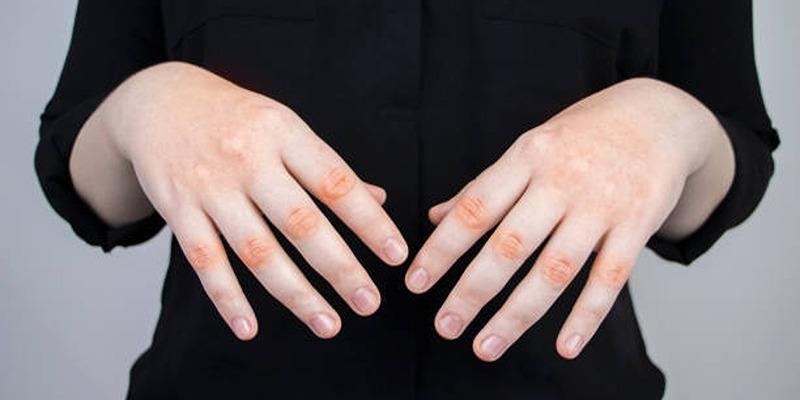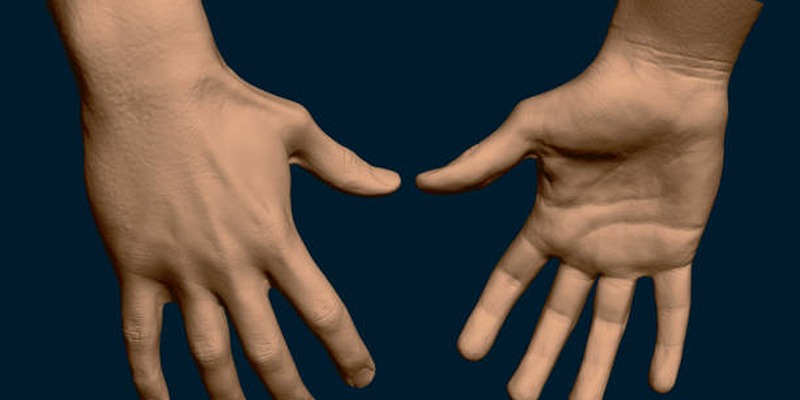What Michelangelo’s Hands Reveal—and Conceal—About Arthritis
Michelangelo Buonarroti was one of the most recognizable artists of the Renaissance movement responsible for such significant works as the chapel ceiling and the statue of David and more importantly he behaved as the genius he was known to be. However, beyond the quality of his art is a relatively unknown ailment that Albrecht ever had and pertained to his hands.
In recent years some researchers have suggested that Michelangelo might have been afflicted with arthritis, a degenerative disease of the skeletal system which causes joint pain and inflammation. This poses emotional and mind bending questions: how was the artist able to capture beauty that has spanned centuries knowing and possibly struggling with the constraints of his condition?
Michelangelo’s Life and Legacy
Born in 1475 in Caprese, Italy, Michelangelo dedicated his life to the pursuit of art, leaving behind a legacy that continues to inspire. Over a career spanning more than seven decades, he created some of the most renowned masterpieces in human history. Despite his unparalleled achievements, Michelangelo was known for his relentless work ethic and the physically grueling nature of his craft. Whether sculpting colossal blocks of marble, painting expansive ceilings, or enduring long hours of meticulous labor, his work demanded extraordinary strength, precision, and endurance.
Historical accounts, including Michelangelo’s letters and biographies, paint a picture of an artist who often sacrificed his health in service to his passion. These records, alongside self-portraits and depictions of his hands, offer valuable insights into the toll his work took on his body, particularly in later years.
What Do Michelangelo’s Hands Tell Us?

Michelangelo’s hands, as depicted in contemporary portraits and sculptures, have long intrigued medical experts and art historians. One particularly revealing source is a series of drawings by Daniele da Volterra, a close friend and contemporary of the artist. These sketches highlight pronounced deformities in Michelangelo’s hands, including swollen joints and misshapen fingers—hallmarks of severe arthritis.
Arthritis, characterized by joint inflammation and stiffness, often leads to visible physical changes such as knobby knuckles and reduced mobility. Experts suggest Michelangelo likely suffered from osteoarthritis, a degenerative condition common in older adults, which can be exacerbated by repetitive, strenuous physical activity. His tireless devotion to his craft, combined with the physical demands of his work, may have accelerated the progression of this condition, leaving a lasting imprint on his body and, in turn, his legacy.
The Physical Toll of Michelangelo’s Craft on His Hands:
- Sculpting: Michelangelo's mastery of marble sculpting stands as one of his most remarkable achievements. This physically demanding art form required exceptional strength, precision, and endurance. Using heavy tools to carve massive blocks of stone for hours at a time, the repetitive motions and intense strain on his hands likely took a significant toll over the years.
- Painting: Beyond sculpture, Michelangelo was an extraordinary painter, with the Sistine Chapel ceiling frescoes serving as an enduring testament to his talent. Painting demands fine motor skills and intricate brushwork—tasks made particularly challenging for someone suffering from arthritis. In his later works, subtle adaptations in his technique suggest he adjusted to his condition, favoring broader strokes and thicker layers of paint to accommodate the limitations in his hands.
- Writing: Michelangelo was also a prolific writer, crafting letters and poems throughout his life. The act of writing, requiring a steady grip and precise hand movements, can be especially taxing for those with arthritis. Yet, despite such challenges, he continued to produce a wealth of written works, demonstrating an unwavering resolve to create, even in the face of physical hardship.
Arthritis and Its Influence on Michelangelo’s Art
Arthritis, particularly in the hands, can severely affect an artist’s ability to create, causing pain, stiffness, and reduced dexterity—qualities essential for intricate artistic work. Remarkably, Michelangelo’s later creations, including his unfinished sculptures known as the “Prisoners” or “Slaves,” show no clear signs of diminished skill or craftsmanship.
Some art historians suggest that the incomplete nature of these works might reflect Michelangelo’s physical struggles as arthritis progressed. However, others interpret this rough, unfinished style as a deliberate expression of his artistic philosophy of the belief that art remains perpetually incomplete, capturing the raw essence of creation in progress.
A Medical and Artistic Perspective
Medical Perspective
A medical analysis of Michelangelo's hands, supported by historical accounts and biographical details, sheds light on how arthritis may have influenced his life. The visible deformities in his hands serve as compelling evidence of a condition that likely afflicted him for many years. However, it is important to recognize that these conclusions are drawn from limited information and must be interpreted with caution. Without access to Michelangelo's medical records or the ability to examine his remains, definitively diagnosing or fully understanding the scope of his condition remains a significant challenge.
Artistic Perspective
From an artistic lens, Michelangelo's battle with arthritis provides a profound insight into the relationship between creativity and physical adversity. Despite enduring significant physical hardships, he continued to produce some of the most iconic masterpieces in history, exemplifying extraordinary determination and resilience. Perhaps even more remarkable was his ability to adapt his techniques and methods to overcome his physical limitations.
This adaptability highlights not only his innovation but also his unyielding dedication to his craft. Though his hands bore the mark of arthritis, his legacy remains unscathed—a powerful testament to the enduring strength of art and the indomitable human spirit.
Lessons from Michelangelo’s Perseverance
Michelangelo’s ability to create iconic works, even while battling arthritis, offers profound lessons on determination and adaptability. His life illustrates that physical setbacks need not curtail creative potential. In fact, such challenges can inspire deeper innovation and unique approaches. For individuals living with arthritis or other chronic conditions, Michelangelo serves as a powerful reminder to pursue passions and find ways to adapt, proving that resilience and creativity can thrive even in the face of adversity.
Arthritis Through the Ages
Arthritis is far from a modern ailment—it has afflicted humanity for centuries. Yet in Michelangelo’s time, understanding of the disease was rudimentary, and treatments were limited to basic herbal remedies and physical therapies. Despite the lack of sophisticated medical care, Michelangelo continued to excel, creating timeless masterpieces. His ability to adapt and innovate in the face of significant physical hardship is all the more remarkable given the medical limitations of his era.
The Intersection of Art and Medicine

Michelangelo’s story reveals the intriguing overlap between art and medicine. Examining his life through a medical lens offers valuable insights into the physical demands of artistic creation and the resilience required to sustain it. This perspective also emphasizes the importance of supporting the health and well-being of contemporary artists, many of whom face similar physical challenges as they pursue their craft.
Conclusion:
Michelangelo’s hands tell the story of a lifetime devoted to art—of unmatched skill, dedication, and the toll exacted by relentless effort. The evidence of arthritis in his later years serves as a poignant reminder of the challenges he faced and the extraordinary perseverance he demonstrated in overcoming them. By exploring Michelangelo’s life through the lens of his physical condition, we gain a richer appreciation of his achievements and the enduring impact of his work. His story is a timeless testament to the power of creativity and resilience, inspiring generations to follow their passions despite life's obstacles.












